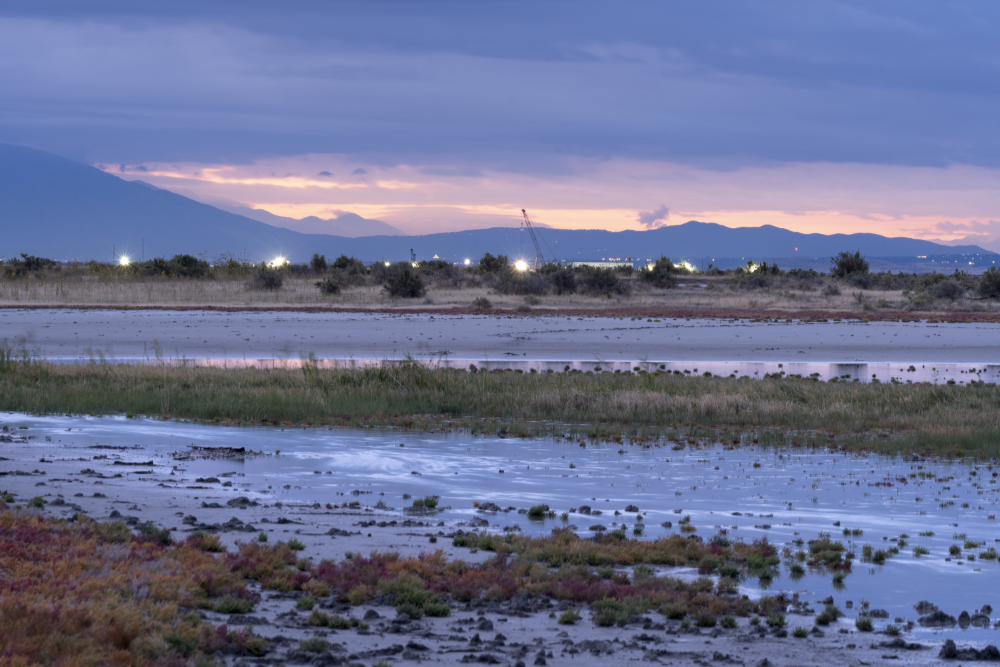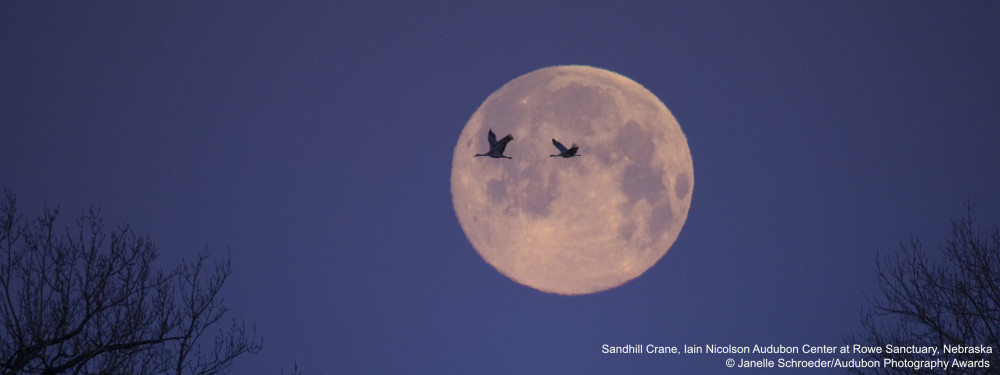Article III
https://greatsaltlakeaudubon.org/resources/dark-skies
What is light pollution?
Light pollution is the presence of unwanted, inappropriate, or excessive artificial lighting which has shown to have negative affects on humans, animals, and ecosystems.
 Light pollution from nearby construction reaches saline wetlands of Audubon's Gillmor Sanctuary in Salt Lake County, Utah, on October 1, 2019.© Evan Barrientos/Audubon Rockies
Light pollution from nearby construction reaches saline wetlands of Audubon's Gillmor Sanctuary in Salt Lake County, Utah, on October 1, 2019.© Evan Barrientos/Audubon Rockies
How does artificial light at night affect our world?
For billions of years, life on earth has depended on the natural rhythm of day and night for migration, reproduction, nourishment, sleep, and protection. Artificial light at night (ALAN) produced by humans has interrupted this cycle and is causing detrimental effects.
Light and Migration
The Salt Lake Valley is on the Pacific Flyway, and the ecosystem of the Great Salt Lake is a crucial stopping point for many migrants to refuel their energy stores. Each spring and fall, millions of birds migrate thousands of miles, many of which travel at night to take advantage of calmer skies, cooler temperatures, and protection from birds of prey. These birds use celestial cues to navigate to their final destination, but artificial light at night has complicated this already dangerous activity. Bright, dense lights disorient birds, drawing them into big cities where they are more likely to collide with windows on tall buildings, and forcing them to expend more energy than they have, causing them to die of exhaustion.

What can you do?
Research has shown that implementing safer outdoor lighting can reduce light pollution and the harmful effects of ALAN on wildlife. The best thing you can do is to turn your lights completely off during migration season which is March-May and September-November from 11 pm - 6 am. For any lighting that needs to remain on at night, you can still make a valuable impact by following the steps below.
- Light only what you need when you need it. Reduce the quantity of lights to only cover the area needed. Consider using automatic timers and motion sensors.
- Use warm bulbs only as bright as you need. Energy efficient bulbs, such as LEDs can save you money and come in a wide color spectrum. Choose bulbs that have a “warm” color temperature no more than 3000 Kelvins. Birds are less attracted to warmer colors like red and yellow than they are to brighter blue light.
-
Shield lights and direct the light downward.
DarkSky approved light fixtures direct light downward and completely cut-off light from traveling upward into the sky.
The bulb type also matters; many LED lights tend to be very bright white which is highly polluting and harmful to migrating birds.
Choose an LED or bulb that is on the yellow or orange color spectrum no more than 3,000 Kelvin with the fewest Lumens necessary to light the area.
Below is a list of DarkSky approved outdoor light fixtures that can be purchased at a local hardware store like Home Depot.
- Home Decorators Collection - Outdoor Wall Lantern Sconce
- Westinghouse - Watt Creek Outdoor Wall Barn Light Sconce Lantern
- Kichler - Independence Outdoor Hardwired Wall Cylinder Sconce
- Home Decorators Collection - Outdoor Line Voltage Wall Sconce
- Home Decorators Collection - Hargreaves Gilded Iron Rustic Farmhouse Hardwired Outdoor Wall Light Lantern Sconce
- Minka Lavery - Bay Crest Outdoor Wall Lantern Sconce
- Hampton Bay - 11 in. Barn Outdoor Wall Light Sconce
- Hampton Bay - 9.12 in. Weathered Pewter LED Outdoor Wall Sconce
- Hampton Bay - 10 in. Bronze LED Barn Light Wall Light
- Home Decorators Collection - 9 in. LED Outdoor Wall Sconce
- Hampton Bay Easton Outdoor Wall Lantern Sconce with Steel Shade
- Take the Lights Out Pledge! Encourage your neighbors to do the same!
Other Resources:
- International Dark Sky Association
- Lights Out Salt Lake
- Bird Window Collisions
- Home Lighting Assessment
- Philadelphia Darkens its Skyline to Protect Migrating Birds - Article
- New York City 9/11 Tribute Memorial Case Study - Article
- How to Bring Lights Out to a City Near You - Article
- Five Principles for Responsible Outdoor Lighting





 on the uploaded document.
on the uploaded document.
0 General Document comments
0 Sentence and Paragraph comments
0 Image and Video comments
New Conversation
New Conversation
New Conversation
New Conversation
General Document Comments 0

